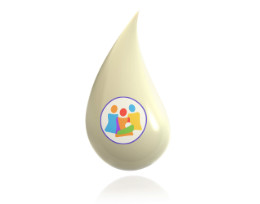Managing a High Milk Production
High milk production may sound desirable, however many lactating parents and babies struggle with breastfeeding problems as a result. Infant symptoms may include fussiness at the breast, gassiness, spitting up, and mucousy stools. The parent can experience recurrent mastitis, plugs and chronic breast pain. Here are some tips to alleviate problems with a high milk production:
Gradually decrease excessive pumping
Pumping in addition to breastfeeding to ease discomfort and reduce fullness will drive up your milk production. In order to reduce excessive pumping, hand express or pump just enough to relieve discomfort due to fullness. Over time, the milk production will decrease, allowing you to stop pumping to comfort. Pumping to complete emptiness is a strong signal to the breast to increase milk production.
Reduce Herbal Supplements
Avoid supplements that contain herbs known to increase milk production, such as fenugreek, blessed thistle, moringa leaf, shatavari, fennel, goats rue, black seed, and other herbal products.
Breast Compression during Feeding
While the baby is nursing, you can cup your breast in your hand, applying firm pressure back into the chest wall to try to slow the flow of milk. This is particularly helpful for the first letdown, which is the heaviest and fastest. As your baby is able to cope with the flow and begins to relax, you can reduce pressure on the breast, allowing the milk to flow freely. This is a temporary measure to help at the beginning of the feed with the initial letdown and isn’t suggested for the entire feeding.
Change Positions
You can try different positions to make it easier for your baby to manage your fast milk flow. These include:
- Sitting the baby in your lap, with the baby straddling your thigh. This allows the baby to sit up to feed.
- Side-lying.
- Lying back in a chair, sofa, or recliner so that the baby is over the breast rather than under it.
Feed One Breast Per Feed
Nursing from 1 side per feeding will allow the other breast to remain full for a few hours. The fullness should send a message to your body to decrease milk production. You may need to pump slightly, just to comfort, on the full side until your body adjusts. This strategy should help decrease production over a few days.
Mix the Fat and Foremilk in the Breast Before Feeding
When the breast is very full, the watery, high lactose portion of the milk (foremilk) will separate from the fattier portion of the milk (hindmilk) (This is not a problem for mothers without excessive milk production). The fussiness and gassiness that occurs with high milk production is thought to be related to the infant taking large volumes of watery, lower-fat milk during the first large let-down. Gently jiggling and rolling the breast between two hands for 30 seconds before nursing can help mix the fat and foremilk so that the baby receives more fat at the beginning of the feeding. This will reduce infant gassiness, crying, and decrease stooling during feeding.
High Milk Production for Parents who are Exclusively Pumping
Exclusive pumping is a very common reason for high milk production, because the pump never stops ‘feeding’ and creates much more demand for milk than the infant ever would. You can reduce your production by turning off the pump when sufficient milk is expressed. It may be tempting to keep pumping because milk is flowing but this will drive the production higher. Most babies need 24-32 ounces (720-960ml) of milk each day.
Reducing the frequency and duration of pumping can help drive down milk production. For example, if pumping every 3 hours, try to pump every 4 hours or reduce the amount of time pumping to a goal volume rather than a number of minutes.
Substances that Decrease Milk Production
Some herbs and medications can reduce milk production, including strong peppermint lozenges (with real peppermint oil) or peppermint tea. The herb sage, purchased as an extract or added as an herb to your food, is also very effective at reducing milk production. Decongestants such as pseudoephedrine and the birth control pill with estrogen as well as other medications may reduce milk production. These supplements and medications are particularly helpful for people who have difficulty reducing milk production due to risk of recurrent plugged ducts, pain, and/or mastitis. Please speak with your doctor prior to starting any medications or herbs to ensure they are safe for you.
Consider a visit with a Lactation Specialist
If the tips above are not sufficient to help bring down milk production or if problems develop along the way such as plugged ducts or recurrent mastitis, please seek advice from a lactation consultant or breastfeeding medicine specialist.


